As we head home from vacation in Maine, here are photos of three lepidopterans (butterflies and moths) that I’ve seen in the past two weeks:
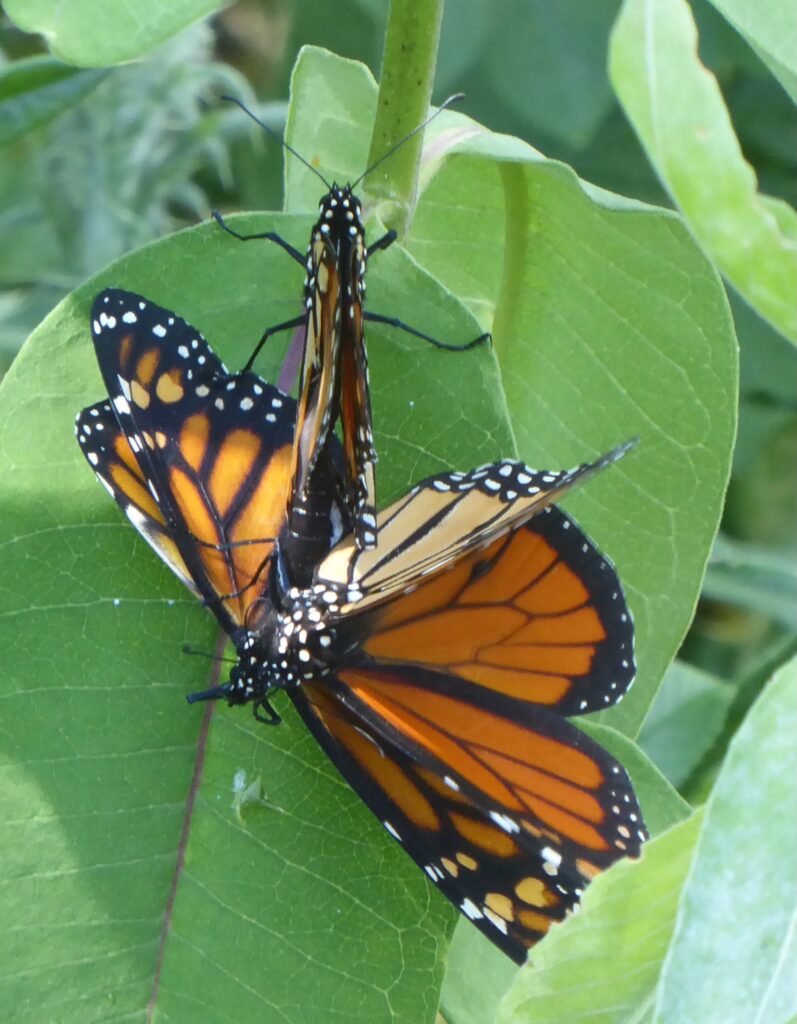
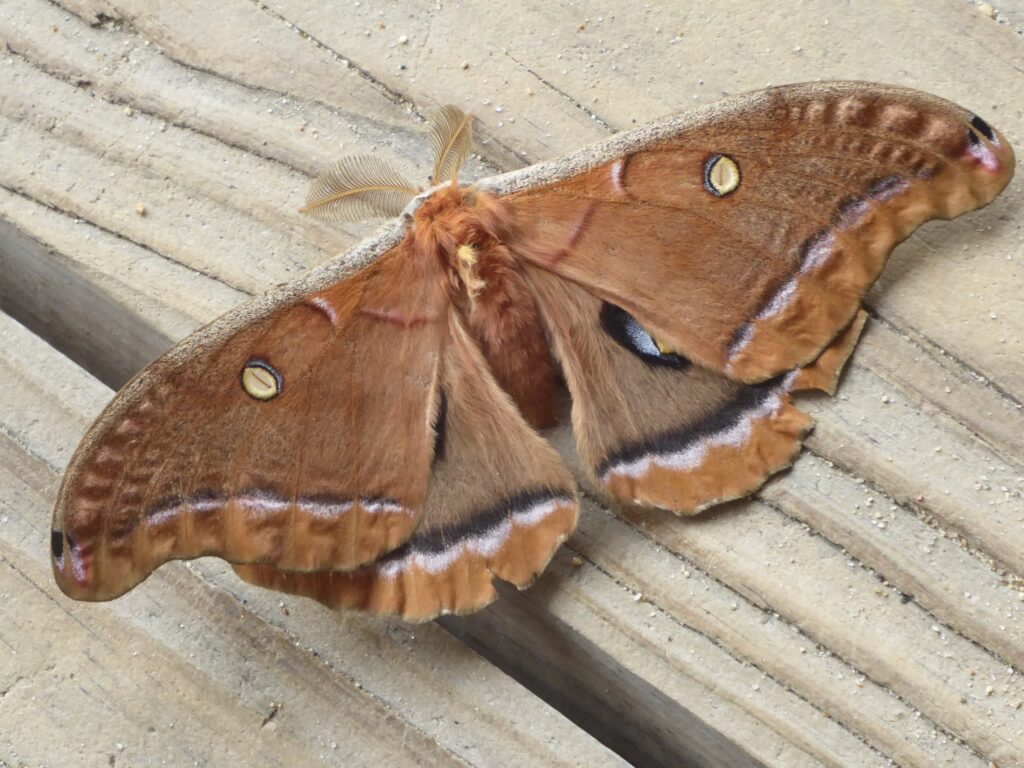
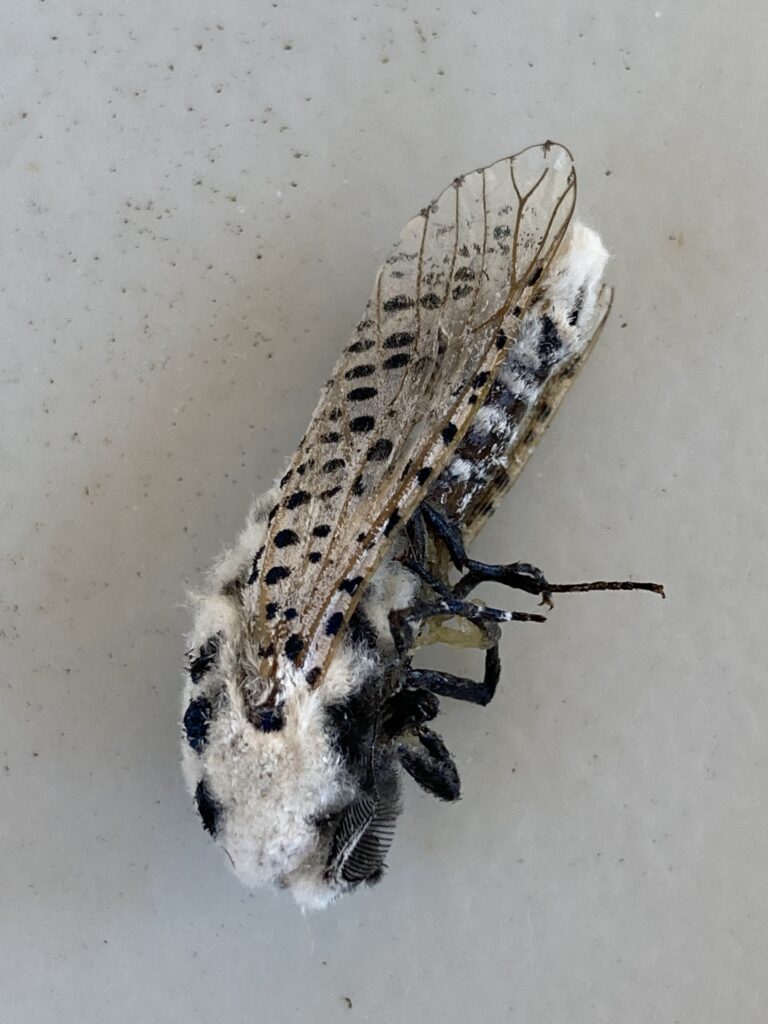
Yet Another Unitarian Universalist
A postmodern heretic's spiritual journey.
As we head home from vacation in Maine, here are photos of three lepidopterans (butterflies and moths) that I’ve seen in the past two weeks:



I saw my first butterfly of the season — a Mourning Cloak — while out walking yesterday afternoon.
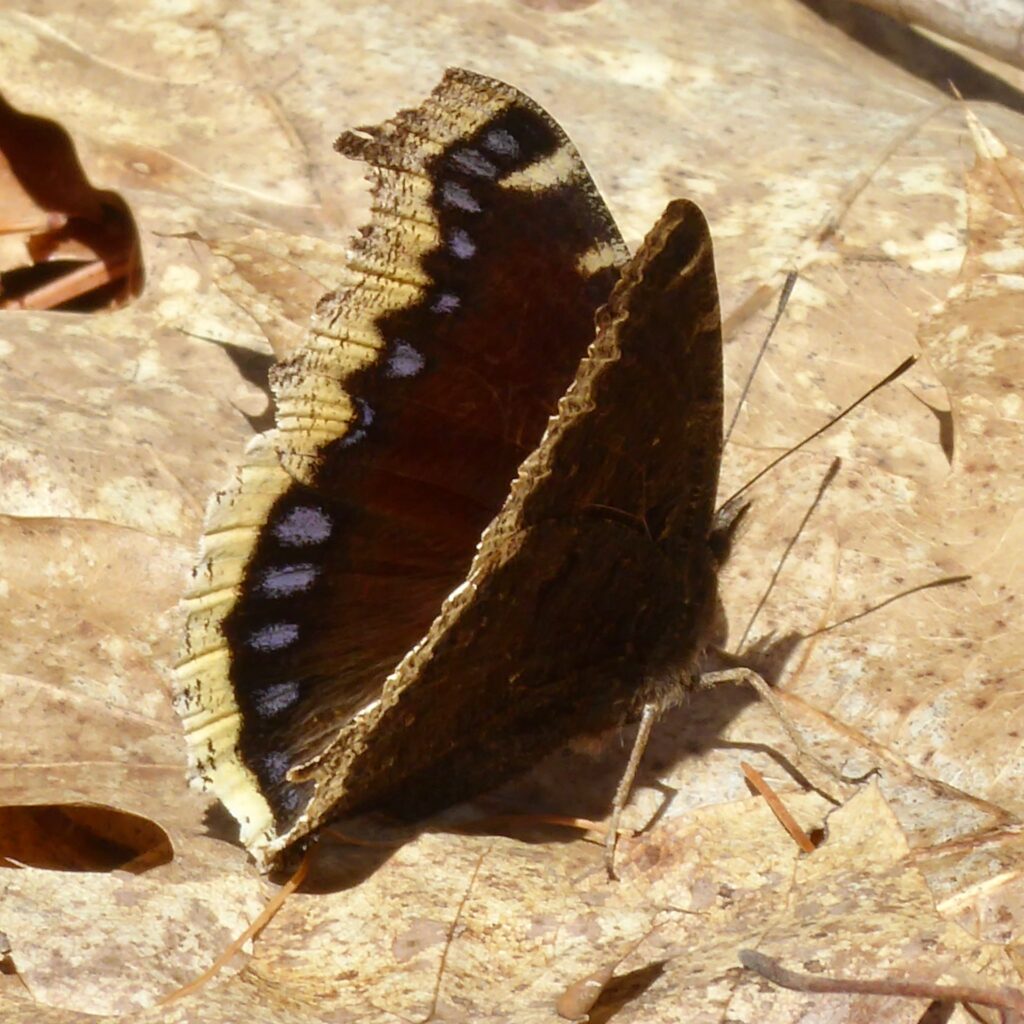
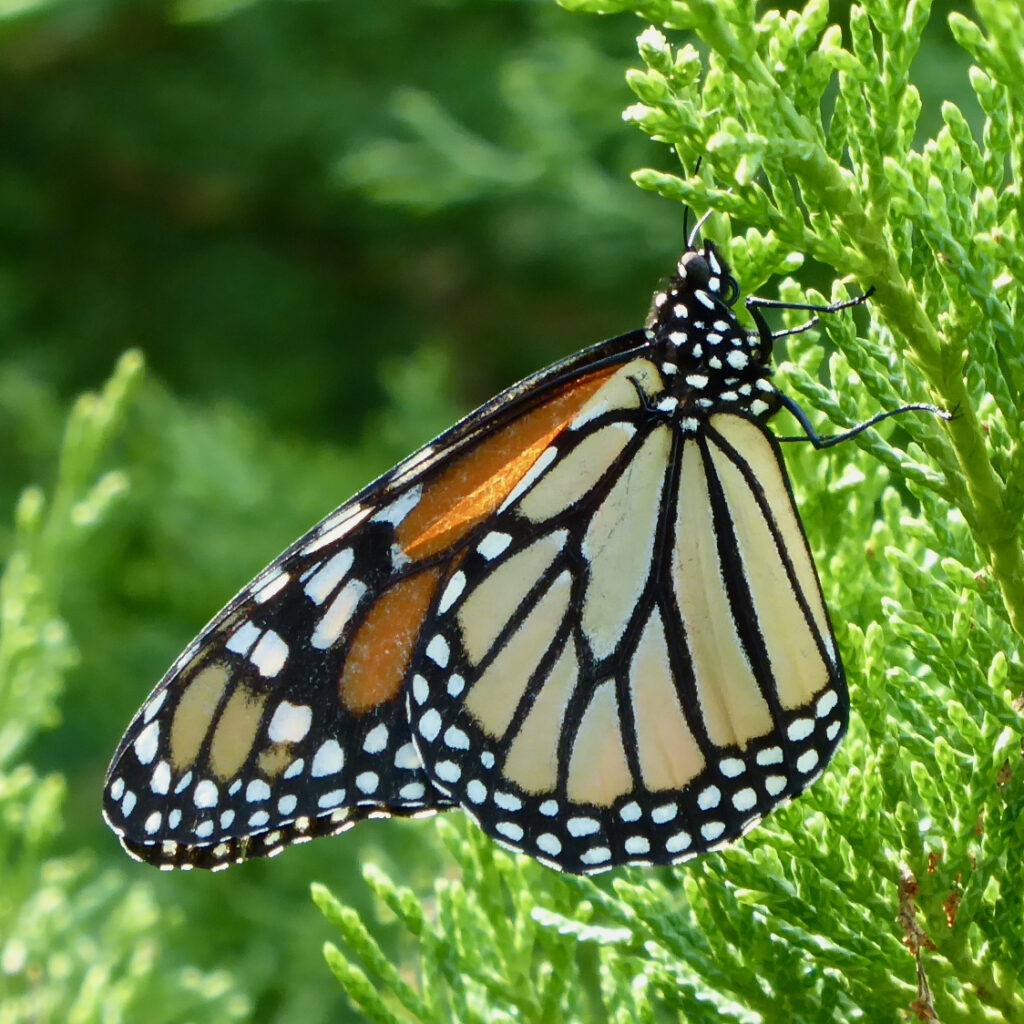
My younger sister and I saw this Monarch butterfly in the gardens at Minuteman National Historical Park this afternoon.
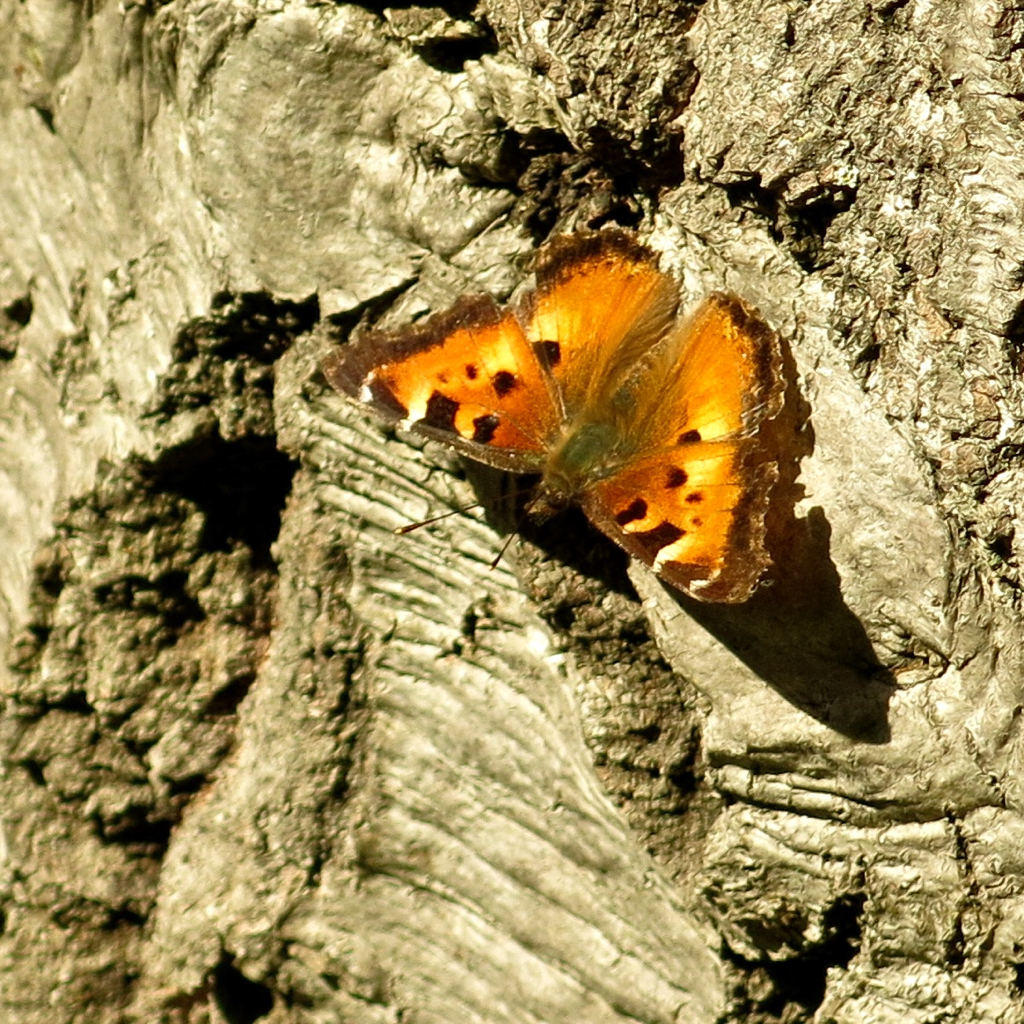
At about 5:30, while wandering around St. John’s Cemetery enjoying the first warm spring day, I saw a number of California Tortoiseshell butterflies flying under some live oaks. I tried to count them but they were moving too fast: at least half a dozen, probably more. They were very active, but some of them settled long enough for me to take their photo. I noticed that the edges of their wings were quite worn.
California Tortoiseshells are migratory butterflies. They hibernate in winter in the foothills of the Coast Range — St. John’s Cemetery could be considered in the foothills of the northern end of the Santa Cruz Mountains . According to Arthur M. Shapiro in Field Guide to Butterflies of the San Francisco Bay and Sacramento Valley Regions: “When they emerge from hibernation in late winter the males are late-afternoon territorial perchers in classic nymphaline style.” Indeed, the butterflies I saw appeared to be patrolling territories, perching in one spot and periodically circling around a small area, sometimes flying at other butterflies in nearby territories.
I went back to the house to get a camera with a better zoom, but by the time I had returned, the sun was almost below the horizon and the butterflies had gone away.
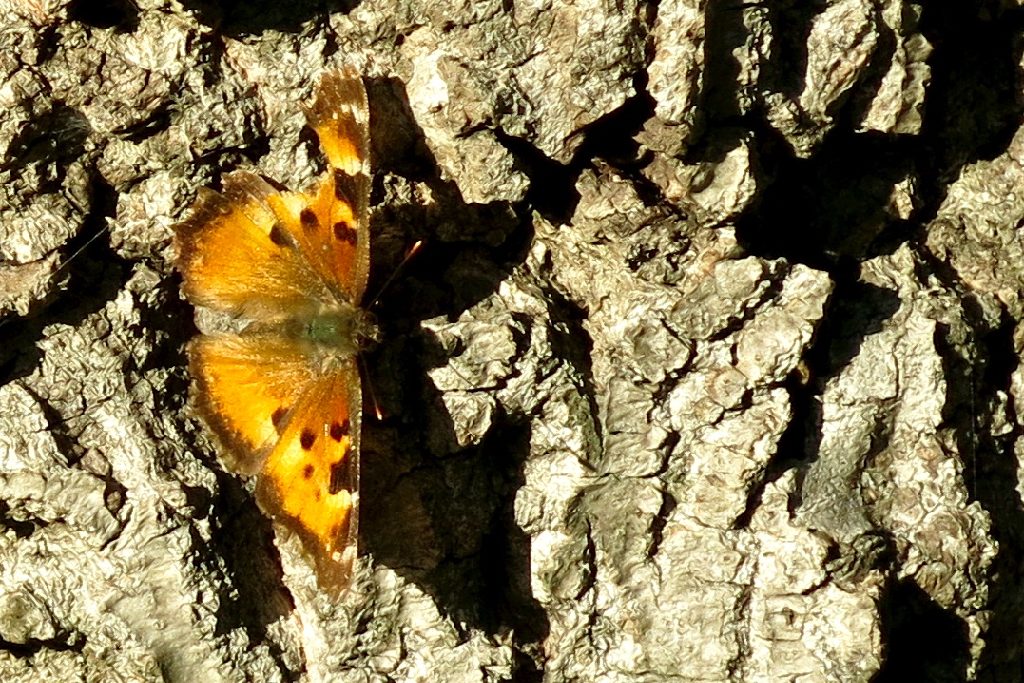
Butterflies, so goes the common wisdom, like flowers, so if you want to attract them you plant flowers that they will like. But butterfly enthusiasts point out that some butterflies prefer “mud puddling”: they are attracted to mud puddles, and like to hang out there.
Carol and I went for a walk in Purisima Creek Redwoods preserve. In places the trail was still damp and even muddy, and in one such place, on a boundary between chaparral and Douglas fir forest, I saw an Echo Blue fluttering along. The trail wasn’t exactly muddy, but I guess it was damp enough, for the insect would light every now and then, put its wings up, and bask.
When I got too close, it unfolded its wings, revealing its attractive bright blue upper surfaces, and flew quickly away, staying close to the trail. I never once saw it go near a flower; so simple observation happened to disprove a stereotype generated by common wisdom. On the other hand, sometimes common wisdom is right. A little further down the trail, a Variable Checkerspot was energetically seeking out flowers.
Ed, whom we met through Sacred Harp singing, is a docent at Natural Bridges State Park, where migrating Monarch butterflies spend several months in the winter. Months ago he had offered to show us the Monarchs, and today we took him up on his offer.
Many of the Monarchs roost near the visitor center, down in a hollow where Blue Gum Eucalyptus trees grow. We walked into the grove at 11:40; the sun was well down into the hollow, and the temperature was rising into the mid-50s F. I looked up, and saw dozens of Monarchs soaring about twenty feet above me. Many more were roosting in the trees, and in the ivy growing up the trees.
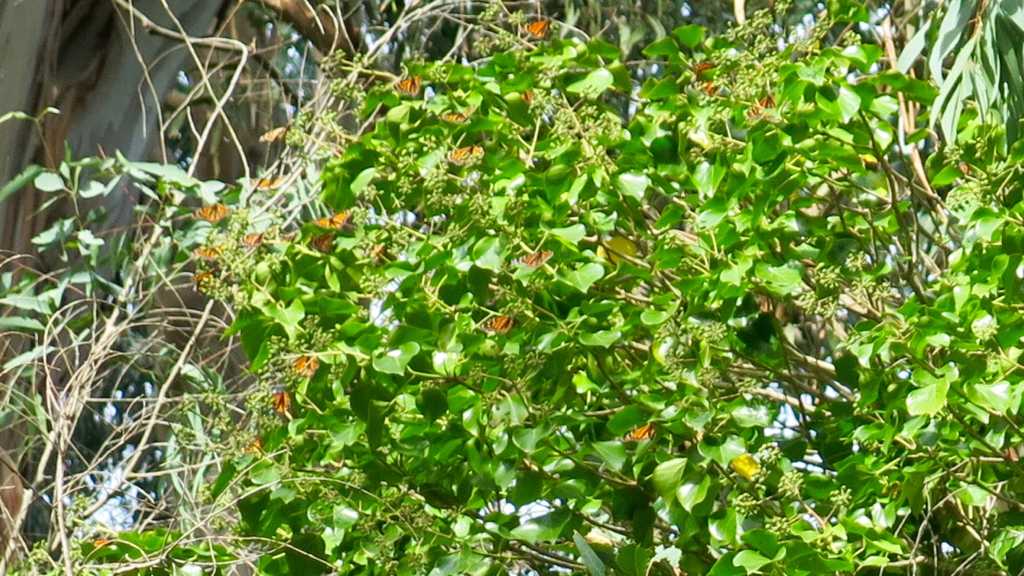
Ed pointed out three large clusters of Monarchs, on three nearby Eucalyptus branches. He had a scope, which he focused on one of the clusters of Monarchs. The scope took in about half the cluster, and it was a spectacular sight: I counted well over a hundred butterflies roosting, all closely packed together. They were mostly showing the dull orange of the undersides of their wings, but every once in a while one would spread its wings, making a momentary spot of vivid bright orange.
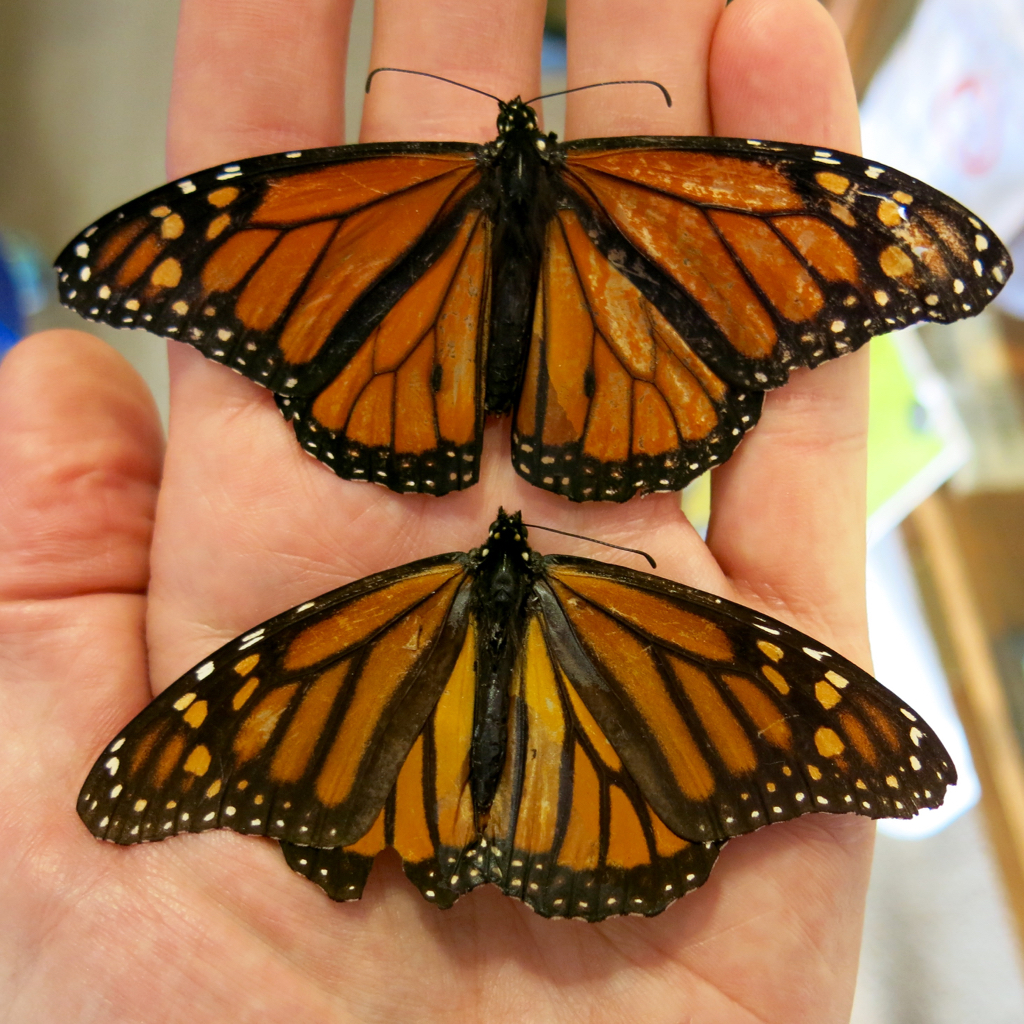
The park has a collection of dead Monarchs, and using two dead insects Ed showed us the difference in the wing patterns of the male and female Monarchs: males have a distinct black spot on each hindwing; females have heavier black veining on their wings.
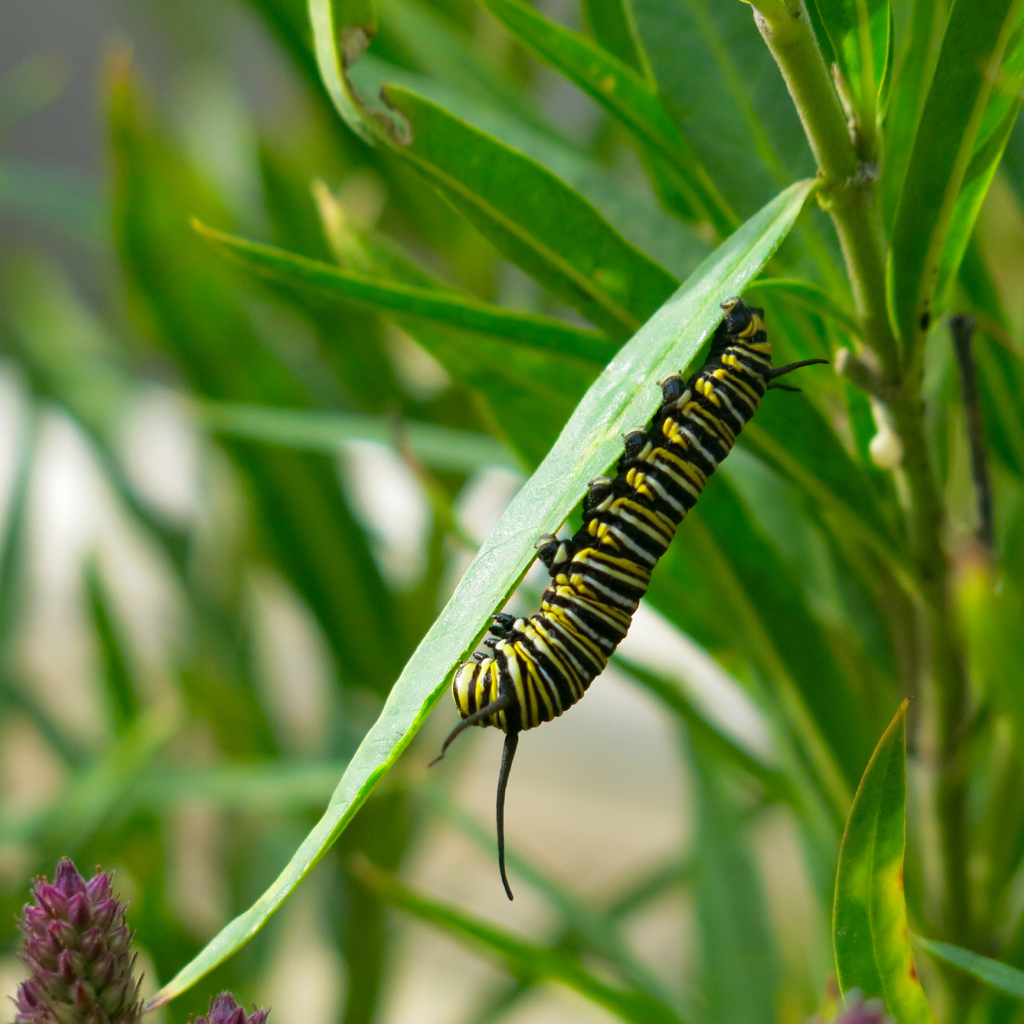
Near the visitor’s center, there’s a small butterfly garden, with two different species of milkweed growing. The caterpillars of Monarch butterflies will eat only milkweed. Sure enough, there were two caterpillars feeding on one of the milkweed plants.
It was a pretty fabulous way to spend a morning.
Info about visiting Natural Bridges State Park and the Monarchs here.
The old time Universalists were fond of saying that “God is love.” That statement may be true, but not in any sentimental sappy sense. Many years ago, Tennyson pointed out that he who might place trust in the belief that “God was love indeed / And love Creation’s final law” needed to remember that “Nature, red in tooth and claw … shriek’d against his creed.”
On our walk today, Abs and I saw a butterfly that had lost much of its left hindwing, and a part of its left forewing. We speculated that perhaps a bird or other predator had attacked the butterfly, and somehow it had gotten away, and was still flying:
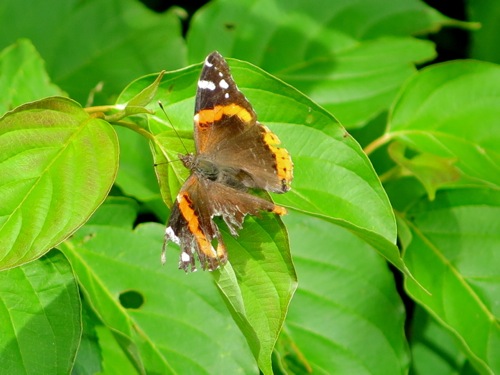
Living things need to eat, and as often as not they eat other living things in order to stay alive. And this is true of you, too, O human being who think yourself an apex predator: there are plenty of microorganisms and parasites and biting insects who feed on you.
I took a break from curriculum development on Tuesday and drove down to Pinnacles National Park. Of course I looked at the incredible rock formations for which the park is famous. But as spectacular as the scenery was, the highlight of the trip was watching butterflies in Bear Gulch. In particular, I spent about ten minutes watching one Western Tiger Swallowtail visiting larkspur blossoms. I took a great many photographs of this one butterfly, getting as close as I could. With a photograph, you can capture narrow slices of time: the position the butterfly’s wings take as it balances on a flower; the way it clings to the flower with its legs and arches its head towards a blossom; the moment when the butterfly is just approaching the flower:
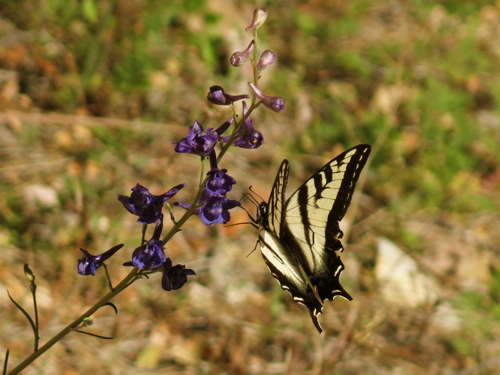
But sometimes what sticks in your memory is not what you actually saw, but the photographs of what you saw. After I left Pinnacles, I drove to Elkhorn Slough National Estuarine Research Reserve. When I saw butterflies there, I made a point of trying to sketch them in my field notebook rather than just photograph them, like this common butterfly:
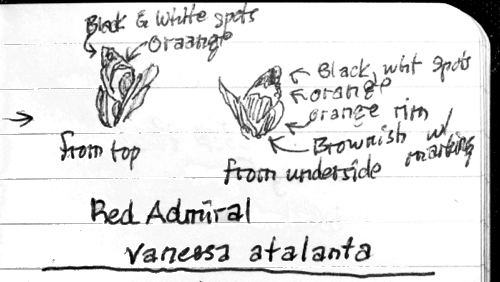
This sketch, as an end product, is not nearly as attractive as a photograph (and I did take a photograph of this insect as well) — it’s not as attractive, but I learned more about butterflies by making this sketch. By comparing my sketch to a field guide, by seeing what I left out, I learned what I don’t see when I look at butterflies. I suspect making less attractive sketches like this does more towards sharpening my powers of observation than does taking a great many very attractive photographs.